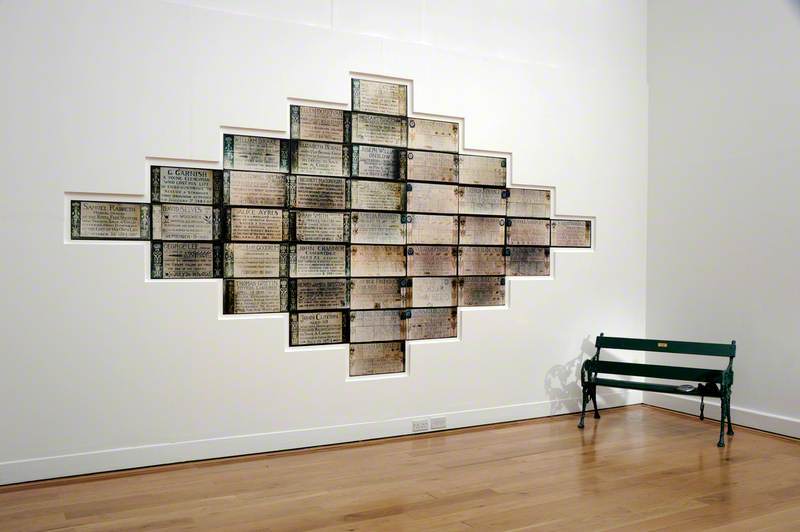American/British artist. Born in Florida, she settled in London in the early 1970s after travelling through Europe. Her work uses a great variety of media, including video and installation, and she cites both *Minimal Art and *Surrealism as sources. In spite of its stylistic and technical variety there is a consistency in the interests behind the work which is informed by *psychoanalysis and anthropology. She had studied the latter before becoming an artist but had become disillusioned by its claims to objectivity and by the manipulative use to which the United States government put it. Dedicated to the Unknown Artist (1972–6) is a series of old postcards, collected by the artist, which all depict rough seas. These anonymous and forgotten images represent a popular reflection of the idea of the sublime (see Abstract Sublime) which, in the period of the Romantic movement, was so important an ingredient of high culture.
Read more
She later told an interviewer: ‘I'm interested in things that are outside or beneath recognition, whether that means cultural invisibility or has to do with the notion of what a person is. I see this as an archaeological investigation, uncovering something to make a different kind of sense of it.’ This concern with what is barely visible or perceptible is a constant theme of her work. Early in her career she became fascinated by the Latvian scientist Konstantin Raudive (1906–74), who claimed to be able to record the sounds of the dead. She has made use of the Surrealist practice of automatic writing (see automatism), for instance in a series of works, the Midnight Self-Portraits (1980–89), in which her own face is obscured by automatic mark-making. Belshazzar's Feast, the Writing on Your Wall (1983–4, Tate) is an installation, made like an ordinary sitting room centred around a television, on which is shown the image of a burning fire. It comments on the widely reported tendency to ‘see things’ in the apparently random patterns of a fire or flickering screen. Hiller had been interested in a number of newspaper reports of people having apparently received extra-terrestrial messages on the television after close down. In other works she deals with poignant and easily forgotten residues of history. Monument (1980, Tate) is a series of photographs of plaques in a London park, put up before the First World War, commemorating tragic but heroic acts of self-sacrifice. Hiller incorporates two distinct ways of receiving the work. The viewer can look at it frontally or sit on a bench, back to the wall and the photographs, listening to a commentary by the artist. If this second option is adopted, the viewer necessarily becomes part of the work and potentially observable. In an installation of 2005, J-Street Project, the wall was covered by a map of Germany marking out all the streets with ‘Juden’ in their names, relics of a destroyed community. An accompanying video documents the artist's search for them Further Reading P. Kenrick, ‘Susan Hiller, Automatic Writing and Images of the Self’, in G. Griffin (ed.), Difference in View: Women and Modernism (1994)
Text source: A Dictionary of Modern and Contemporary Art (Oxford University Press)






